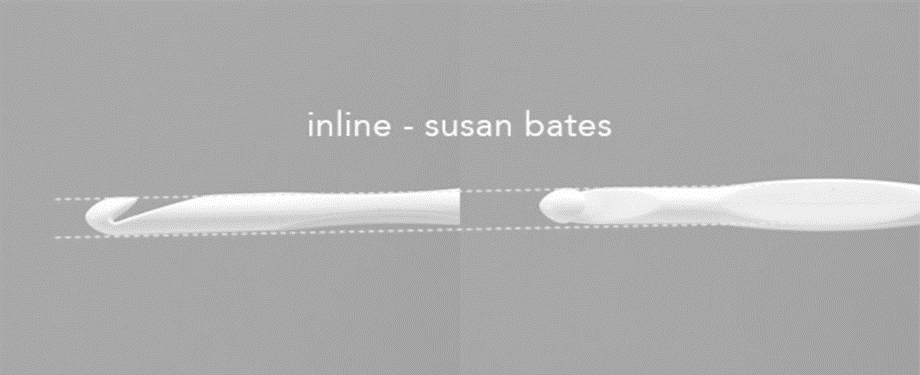If you want to try something new and expand
your crochet skills, Tunisian crochet is the perfect technique to explore.
Tunisian crochet creates unique and intricate designs, combining knitting and
crochet elements that will impress your friends and family. The key to Tunisian
crochet lies in the use of special crochet hooks called Tunisian crochet hooks
or Afghan crochet hooks. These hooks are longer than regular crochet hooks,
allowing you to pick up and hold multiple stitches at once.
Introduction to Tunisian Crochet
Tunisian/Afghan crochet hooks are longer than
regular ones. They have a stopper at one end to prevent stitches from falling
off. These hooks come in various materials like aluminum, plastic, wood, and
bamboo for infinite creative options. The choice of hook will depend on
personal preference and the specific project you're working on. Considering the
weather, you can opt for bamboo
interchangeable Tunisian hooks or any other material, as bamboo
provides a warm grip in the chilly climate.
The backbones of the Tunisian Crochet hook
In Tunisian crochet, the two most prominent
steps are followed in each row called "Two Passes."
●
Forward pass (FwP): In Tunisian crochet, the
Forward Pass (FwP) initiates the row by inserting the hook from right to left,
pulling up loops in each stitch, and leaving them on the hook. This process
builds a row of live stitches on the hook.
●
Return Pass (RetP): It is executed by yarning
over and pulling through loops in a specific sequence, effectively completing
the stitches and working them off the hook from left to right.
The FwP and RetP together comprise the basic
stages of Tunisian
crochet, producing a fabric characterized by its unique appearance and
dense texture, similar to a combination of traditional crochet and knitting.
Basic Tunisian Crochet Stitches
Here, you can find a comprehensive compilation
of fundamental stitches and clear instructions for seamless execution.
Tunisian Simple Stitch (TSS):
a. Insert the hook from right to left under
the front vertical bar of the next stitch.
b. Yarn over and pull up a loop, keeping it on
the hook.
c. Repeat across the row, working one TSS in
each stitch.
Tunisian Knit Stitch (TKS):
a. Insert the hook from front to back through
the stitch.
b. Yarn over and pull up a loop, keeping it on
the hook.
c. Repeat across the row, working one TKS in
each stitch.
Tunisian Purl Stitch (TPS):
a. Bring the yarn to the front of the work.
b. Insert the hook from right to left through
the stitch.
c. Yarn over and pull up a loop, keeping it on
the hook.
d. Repeat across the row, working one TPS in
each stitch.
Tunisian Double Crochet (Tdc):
a. Yarn over, and insert the hook under the
next vertical bar.
b. Yarn over and pull up a loop, keeping it on
the hook.
c. Yarn over and draw through two loops on the
hook, yarn over and draw through the remaining two loops.
Tunisian Extended Stitch (TES):
a. Yarn over and insert the hook under the
next vertical bar.
b. Yarn over and pull up a loop, keeping it on
the hook.
c. Yarn over again and draw through one loop
on the hook, creating an extended height.
d. Repeat across the row, working one TES in
each stitch.
Combined with the forward and return passes,
these steps create the unique fabric of Tunisian crochet.
Tunisian Crochet Hooks Vs. Regular Crochet Hooks
|
|
Tunisian
Crochet Hooks |
Regular Crochet Hooks |
|
Length and Design |
They are longer, allowing multiple stitches
to be retained along the shaft. |
They have a shorter shaft and are designed
for working one stitch at a time. |
|
Stitch Retention |
They feature a stopper at one end to prevent
stitches from slipping off, facilitating the management of a large number of
stitches. |
They do not have a stopper, making them
better suited for traditional crochet techniques that involve fewer stitches
on the hook at once. |
|
Versatility |
They are primarily used for Tunisian crochet
projects, such as blankets, scarves, and garments. |
They are versatile and can be used for a
wide range of crochet projects, including amigurumi, accessories, and home
decor items. |
So, always consider your project type to
choose a suitable crochet hook.
We hope that this blog has provided you with a
solid foundation on Tunisian/Afghan crochet hooks.
Now, we encourage you to try different stitch types, which allows you to deepen
and reinforce your understanding.





